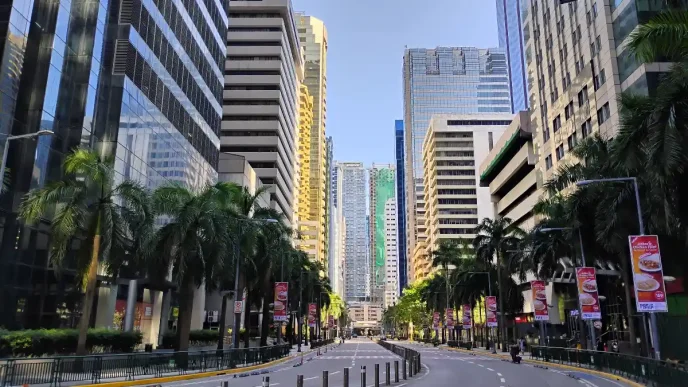Vietnam’s government has unveiled a series of economic reforms aimed at bolstering trade and attracting foreign investment, but the measures have ignited a heated debate among policymakers, business leaders, and citizens. Announced on July 29, 2025, the reforms promise to reshape Vietnam’s position in the global market, though questions linger over their long-term impact on local industries and workers.
A Bold Push for Trade Liberalization
The centerpiece of Vietnam’s latest economic strategy is a significant reduction in tariffs on key imports and a streamlined process for foreign direct investment (FDI). The government hopes to build on the success of existing trade agreements, such as the Comprehensive and Progressive Agreement for Trans-Pacific Partnership (CPTPP) and the EU-Vietnam Free Trade Agreement (EVFTA), to position Vietnam as a hub for manufacturing and export. Officials argue that these reforms will create jobs and drive economic growth, particularly in high-tech and textile sectors.
The Ministry of Trade and Industry outlined plans to cut tariffs on industrial machinery and raw materials by up to 15% over the next two years, a move intended to lower production costs for domestic manufacturers. Additionally, new incentives for foreign investors include tax breaks for companies establishing operations in Vietnam’s industrial zones. These policies are expected to attract an estimated 10 billion USD in FDI by 2027, according to government projections reported by local outlets.
Concerns Over Local Impact
Despite the optimism from Hanoi, not everyone is convinced that the reforms will deliver equitable benefits. Small and medium-sized enterprises (SMEs), which form the backbone of Vietnam’s economy, fear they may struggle to compete with an influx of foreign competitors. Trade unions have also raised alarms over potential job losses in sectors vulnerable to cheaper imports, such as agriculture and traditional manufacturing.
In Ho Chi Minh City, factory owners expressed mixed feelings about the reforms. While some welcome the reduced costs of imported materials, others worry about being undercut by foreign firms with greater capital. The Vietnam Chamber of Commerce and Industry (VCCI) has called for additional support mechanisms, such as subsidies or training programs, to help local businesses adapt to the changing landscape.
Global Context and Regional Competition
Vietnam’s reforms come at a time of heightened competition within Southeast Asia. Neighboring countries like Thailand and Indonesia have also rolled out aggressive policies to lure foreign investment, creating a regional race for economic dominance. Vietnam’s proximity to China and its relatively low labor costs have historically given it an edge, but analysts note that sustaining this advantage will require more than tariff cuts.
The reforms also reflect Vietnam’s broader ambition to diversify its economy away from reliance on low-cost labor. By prioritizing high-value industries such as electronics and renewable energy, Hanoi aims to mirror the economic trajectories of Singapore and South Korea. However, achieving this transition will demand significant investment in education and infrastructure—areas where Vietnam still faces challenges.
Public and Political Reactions
Public opinion on the reforms appears divided. In Hanoi, street vendors and small business owners voiced skepticism about whether the benefits of FDI will trickle down to ordinary citizens. Meanwhile, urban professionals in Ho Chi Minh City see the reforms as a necessary step toward modernization, even if they come with short-term disruptions.
Politically, the reforms have sparked debate within Vietnam’s ruling Communist Party. While the leadership champions the policies as a means of securing economic stability, some party members caution against moving too quickly on trade liberalization. They argue that protecting domestic industries must remain a priority, especially in a global economy marked by uncertainty.
Balancing Growth and Stability
As Vietnam navigates this pivotal moment, the government faces the delicate task of balancing economic growth with social stability. The reforms’ success will hinge on Hanoi’s ability to address the concerns of local businesses and workers while capitalizing on the opportunities presented by global trade. For now, the tariff cuts and FDI incentives represent a calculated gamble—one that could either propel Vietnam to new heights or expose vulnerabilities in its economic foundation.
Economists point to the need for complementary policies, such as workforce retraining and infrastructure development, to ensure that the benefits of reform are widely shared. Without these measures, there is a risk that inequality could widen, fueling discontent among those left behind by rapid globalization.
Looking Ahead
Vietnam’s economic reforms are just the beginning of what promises to be a transformative period for the nation. As the government rolls out these policies over the coming months, all eyes will be on Hanoi to see whether it can deliver on its ambitious promises. The stakes are high, not only for Vietnam but for the broader Southeast Asian region, where economic shifts in one country often ripple across borders.
Will these reforms cement Vietnam’s status as a rising economic power, or will they reveal the limits of rapid liberalization? Only time will tell, but for now, the debate over Vietnam’s future continues to unfold in boardrooms, factories, and street markets alike.
















